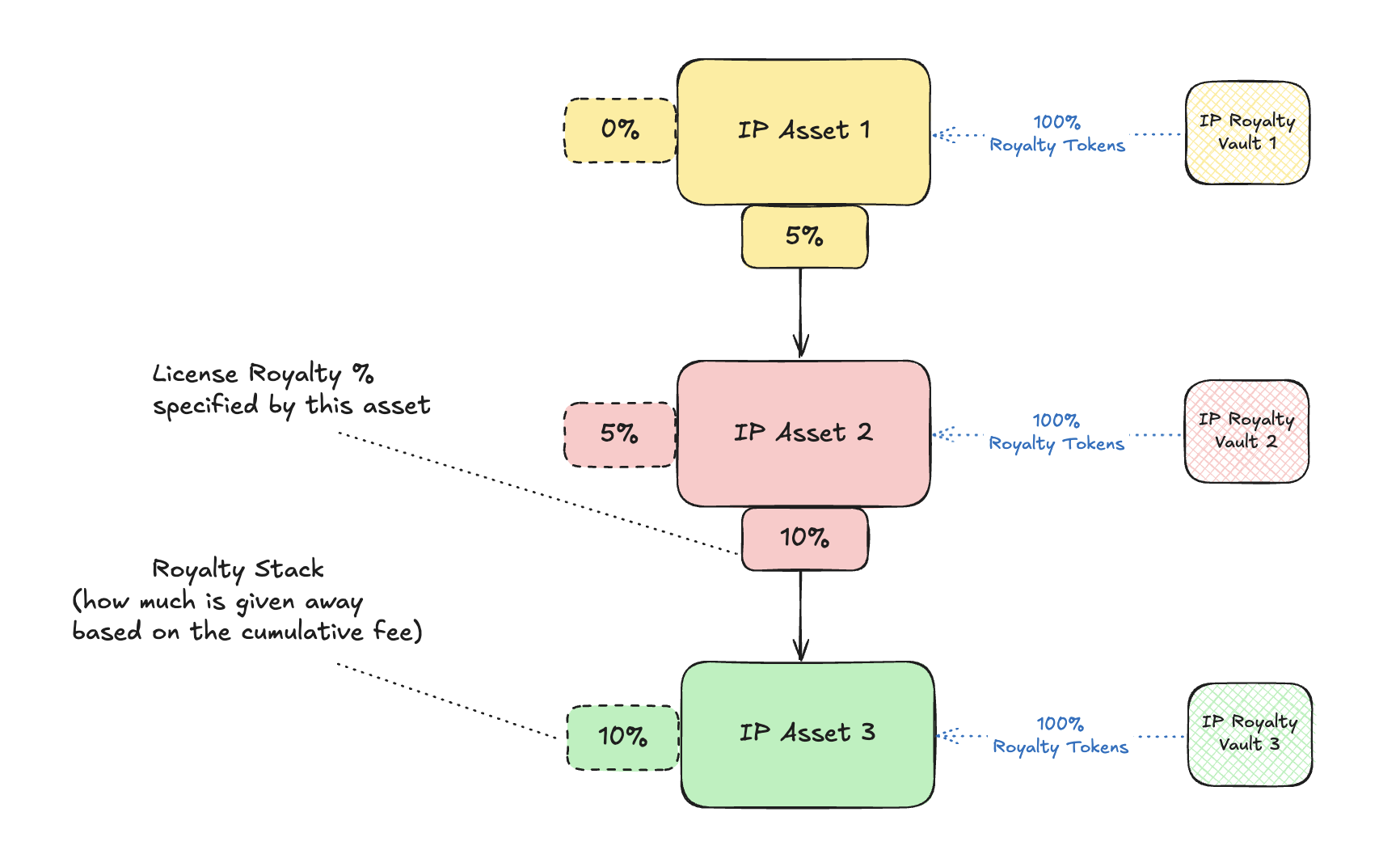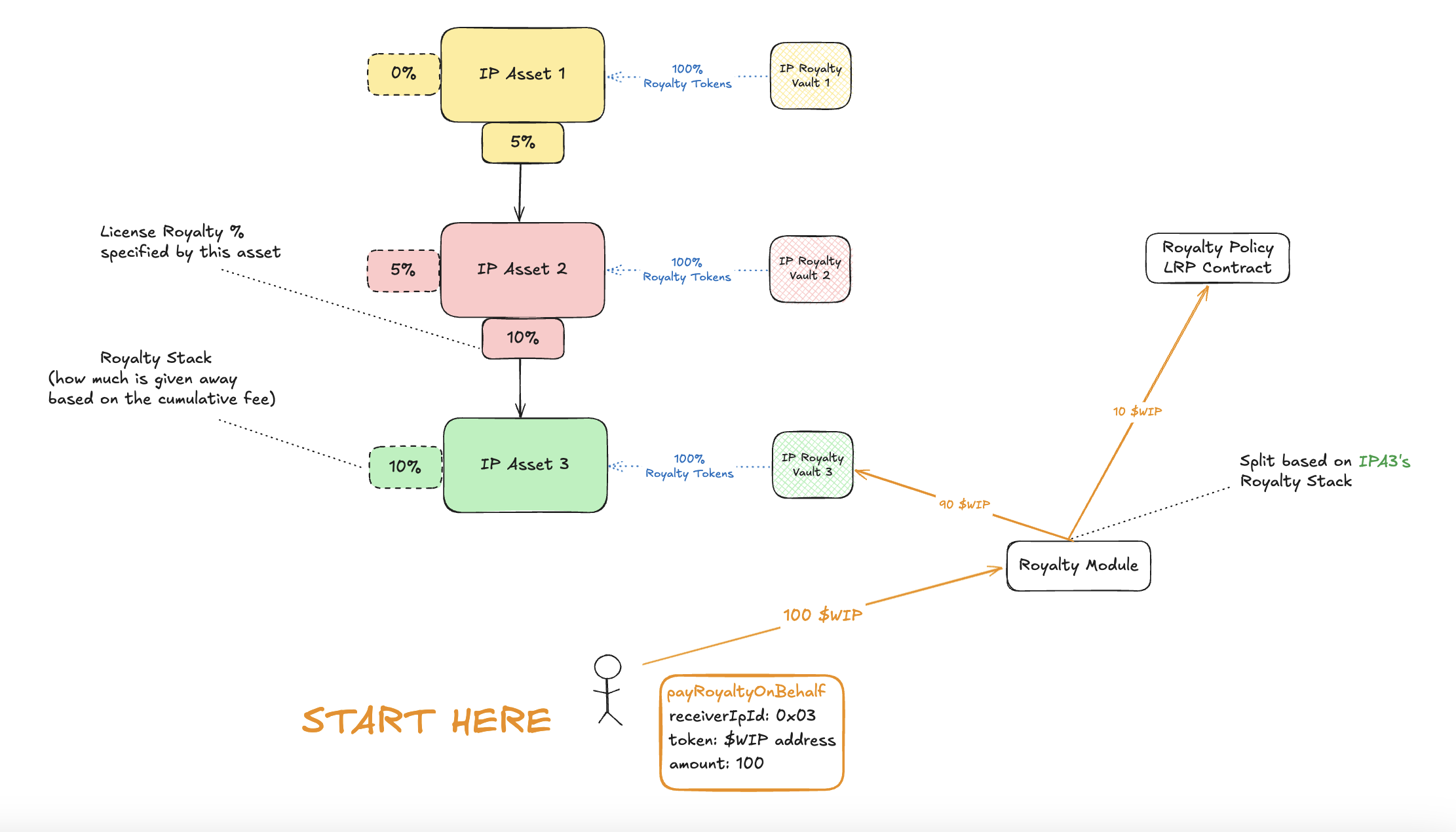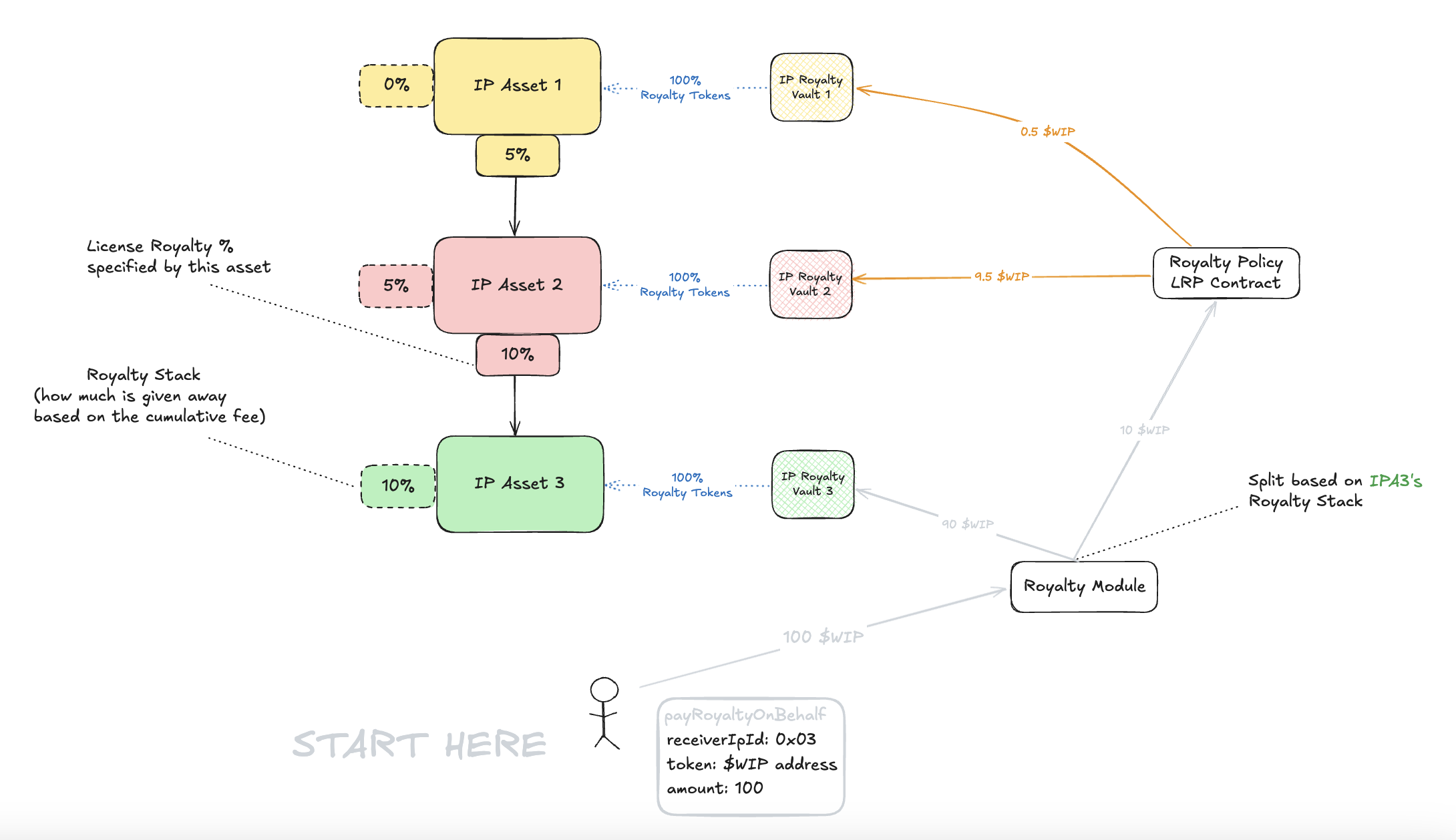Calculated Royalty Stack
In the image below, IPA 1 and IPA 2 - due to being ancestors of IPA 3 - have a % economic right over revenue made by IPA 3. Key notes to understand the derivative chain below:- License Royalty %: this percentage is selected by the user and it means the percentage that the user wants - according to LRP rules - in return for allowing other users to remix its IPA.
- Royalty Stack: the total revenue % an IPA has to pay to all its parents. For LRP, it’s the sum of license percentages used to connect to each parent
- Royalty Stack IPA 2 = License Royalty % between IPAs 1 and 2 = 5%
- Royalty Stack IPA 3 = License Royalty % between IPAs 2 and 3 = 10%
The “License Royalty %” in this diagram corresponds to the same value as the
commercialRevShare on the PIL terms.
Royalty Module Split
Let’s show an example where a payment is made to IPA 3. In the below diagram, you can see that initial payment is forwarded to the Royalty Module. The Royalty Module then splits the payment based on the Royalty Stack determined by the LRP policy:- 10 $WIP is sent to the LRP policy contract because of the 10% LRP royalty stack
- 90 $WIP is sent to the IPA 3 vault

Royalty Policy LRP Distribution
After this initial payment is complete, IPA 1 and 2 can claim their revenue from the LRP policy contract. The LRP policy contract will then distribute the revenue to the parents based on the negotiated revenue share percentages:- IPA2 gets 10% of IPA3’s revenue (10 $WIP)
- IPA1 gets 5% of IPA2’s revenue (0.5 $WIP)
- IPA2 is left with 9.5 $WIP


